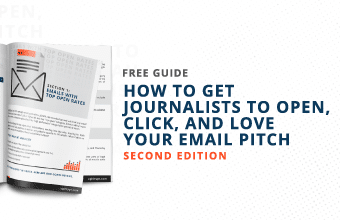Regardless of your industry, maximizing brand awareness across the spectrum of audiences important to your business is essential. In addition to marketing and social media elements, your communications strategy should include targeting a broad array of media outlets from business to industry to verticals to technical. For a B2B organization, gaining exposure in the mainstream press can be challenging, but not an impossible task.
Today’s fast moving and noisy media landscape means that reporters and consumers alike face a constant onslaught of information. There are fewer opportunities for your voice to be heard in the mainstream press, and much more competition for that little bit of space.
Whatever your objective—growing the business, launching a new product or service, moving into new markets—utilizing a few key strategies can help separate your business from the noise, and ensure your story is heard by this important audience.Finding the right reporter, developing a story that resonates with a less technical, more mainstream audience and perhaps most important, selecting the right spokesperson, will get you well on your way.
Find the right reporter
First, of course, is to identify the right publication and reporter to convey your story to the audience you are trying to reach. Read the reporter’s work, learn about their background, figure out their style, and begin to develop a relationship. Start small and get on their radar by retweeting them, commenting on their blog, or liking their latest Facebook post. Most of us are much more likely to open an email sent by a name we recognize, and this is true of reporters as well. It’s also important to note that press coverage can snowball into more press coverage.
When you’re first getting started targeting mainstream press, consider pitching smaller outlets, blogs or local news. Smaller media outlets can provide exposure and third-party credibility for your business which you can then share with that high-value reporter. Most reporters are passionate about doing their research! They will read their competitors work and seeing your organization or spokesperson featured in a story underscores that you are a credible source.
Tell the right story
One of the most challenging pieces of connecting with mainstream press is developing a story idea that captures their interest. To say that reporters are busy is an extreme understatement. They are also working with a skeleton crew at a frenetic pace. Your story has to stand out, and be relevant and relatable to the average person, especially for B2B companies.
This is, of course, also the most difficult part of crafting a story for this tough-to-penetrate audience. It should be broad and discuss impacts beyond the technology itself. It should not include product news, or be overly salesy with B2B messaging or marketing jargon. Instead, focus on how it will affect the human experience, jobs, quality of life, health, survival. For example, if you build widgets for the healthcare industry, instead of talking about the attributes of your new widget, discuss how it will improve patient experiences during a hospital stay. Or discuss how the widgets will improve efficiencies for the hospital(s) and increase ROI.
Broad, relatable messages like these are key, and a B2B company will rarely get the attention of a mainstream reporter without them. Have a point of view, offer data points if you have them, and don’t be afraid of big ideas!
Offer the right spokesperson
Every interaction with the press is a strategic decision. Identifying the right spokesperson for the job is critically important because choosing the wrong spokesperson can have disastrous effects, especially when it comes to working with members of the press. The best spokesperson should be media trained and comfortable speaking with the press. They should understand the company, its key messages and the industry as a whole. Consider their role within the company, their credibility and influence within the industry, and also their ability to deliver THIS story in a compelling way.
Picture this…you did the research, developed an amazingly compelling pitch that landed you a precious 15 minutes of the reporter’s time, and…your spokesperson flops. Now, it could be that the flopper is a perfect spokesperson for technical press but not the right one to communicate the big idea. Being a spokesperson for mainstream press is likely not a job for the super technical engineer. And we know that securing a media interview doesn’t guarantee press coverage, so it’s ultimately up to your spokesperson to convince the reporter that your story is worth telling.
Finally, be sure that your spokesperson is prepped for the conversation. Even if they are an interviewing pro, you should get them up to speed on what the reporter is looking to discuss during this conversation. Provide your spokesperson with background on the reporter, his/her beat, and an overview of the publication. Key talking points and a list of anticipated questions and possible responses is also a very important piece of the prep. Doing this well in advance gives your spokesperson time to review and ask questions before jumping on the line with the reporter.
Ready to expand your presence in the mainstream media? Contact us to find out how the Interprose team can help you develop the right story to reach this key audience.








